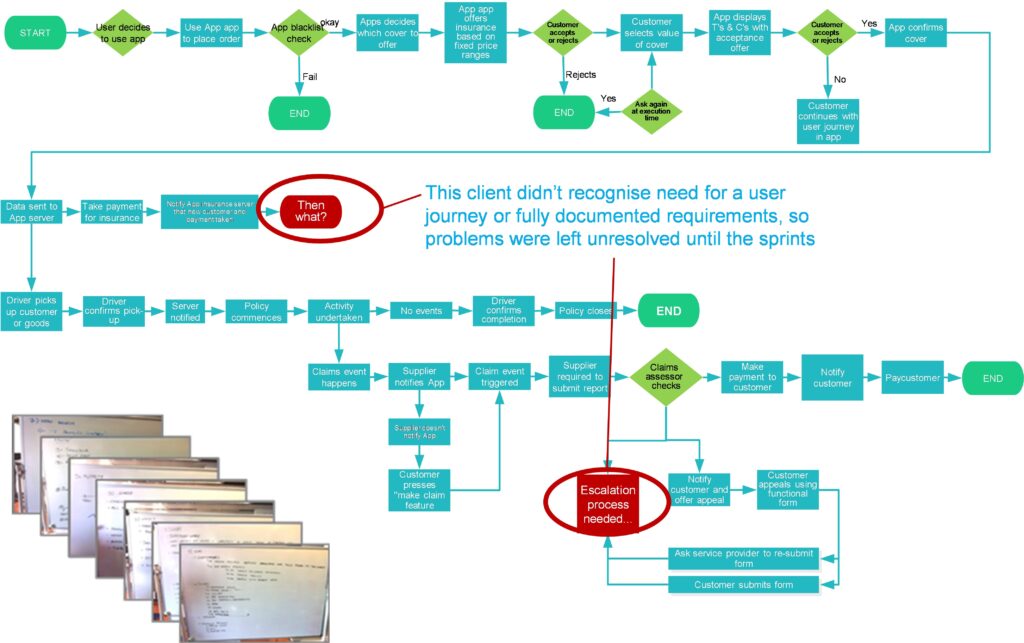1. Get the requirements clear
We demonstrate the importance of good requirements in the illustrated example. This is the user journey for an insurance app, the client didn’t believe a user journey necessary, and didn’t want detailed user requirements as part of the delivery.
This meant that the user journey was left undefined. When we picked up the project, we mapped out the likely user journey. The breaks in the journey clearly show where the parties had failed to get their requirements aligned.
As a result, the sprints were delayed and eventually the tech partner withdrew from the project.
- Business people don’t always appreciate the need for good user requirements
- Clear and documented requirements are more than pretty pictures
- Remember requirements from outside core client functions
- Link requirements to outcomes
- Link deliverables to requirements
- Link requirements to quality acceptance levels
- Link requirements to MVP
- Take documentation seriously
- Take user journeys seriously
- Make sure that conflicts and paradoxes are known
Because implementation projects are always more complex than stakeholders initially realise, we need to be mindful of managing that complexity well. This is discussed in the next section.
- Get the requirements clear
- Complexity is a reality, manage it well
- Realistic & collaborative planning
- Get everyone comfortable with realistic timelines
- Don’t expect many people to have deep understanding
- Good project management saves time and money
- Good two-way communication and governance
- Understanding your impact on the client
- Don’t shortcut testing
- MVP vs Quality









